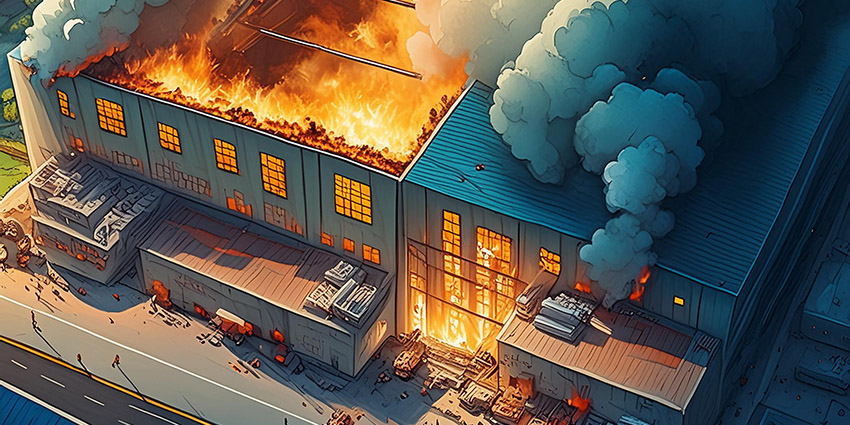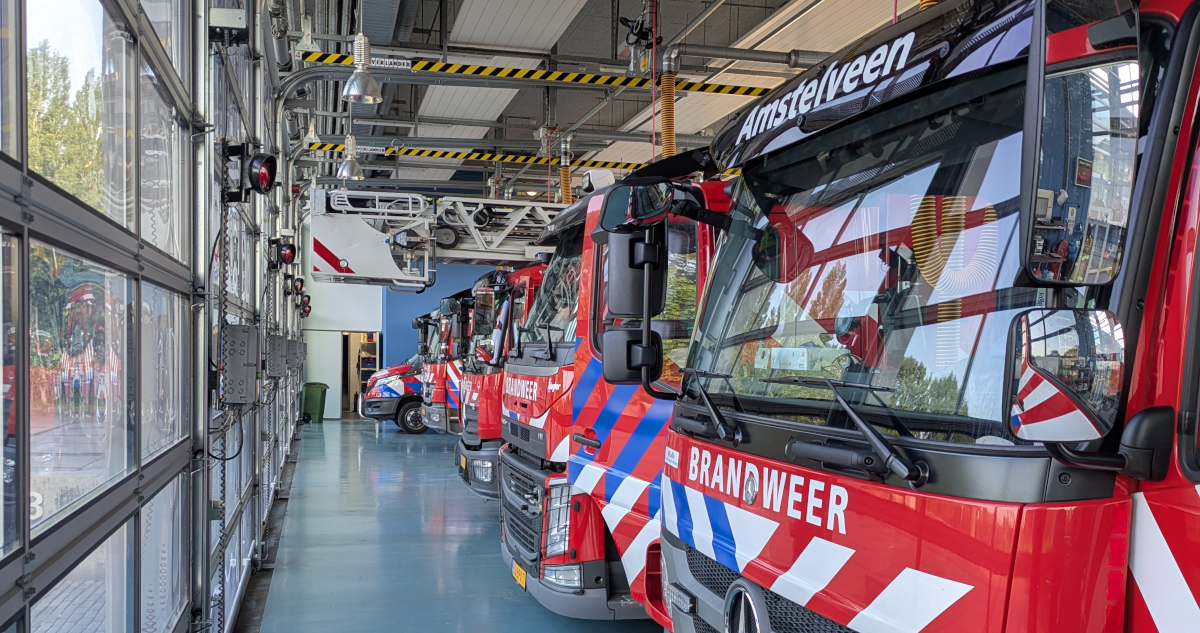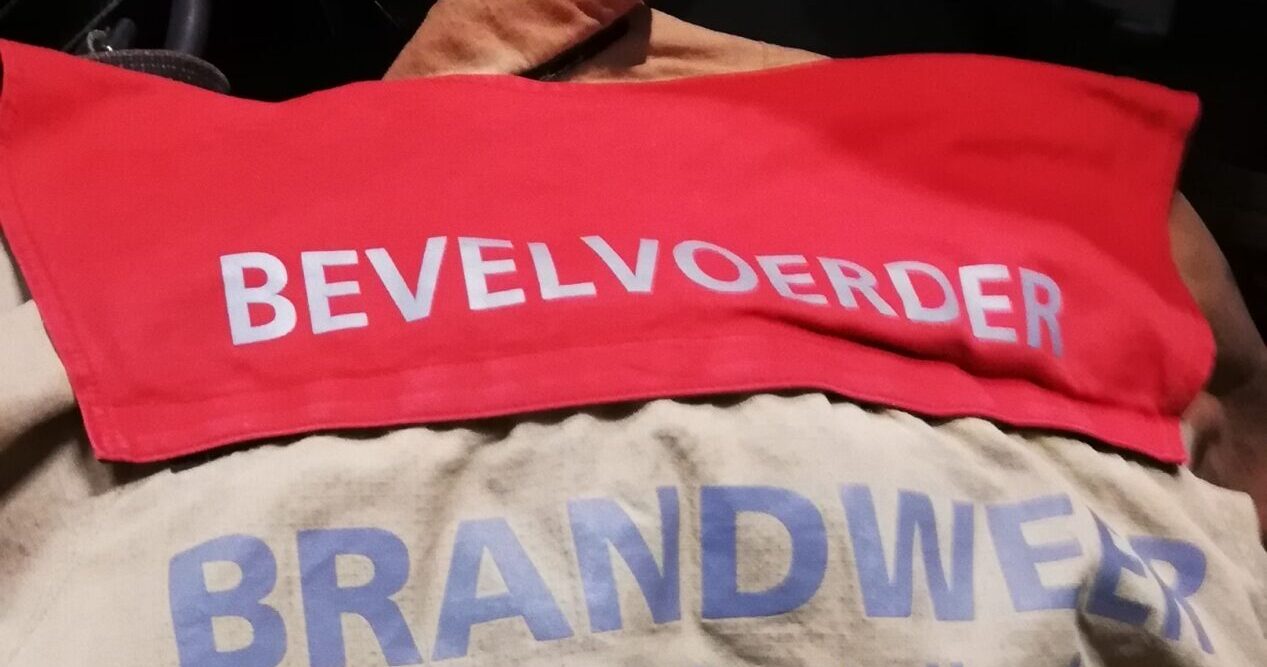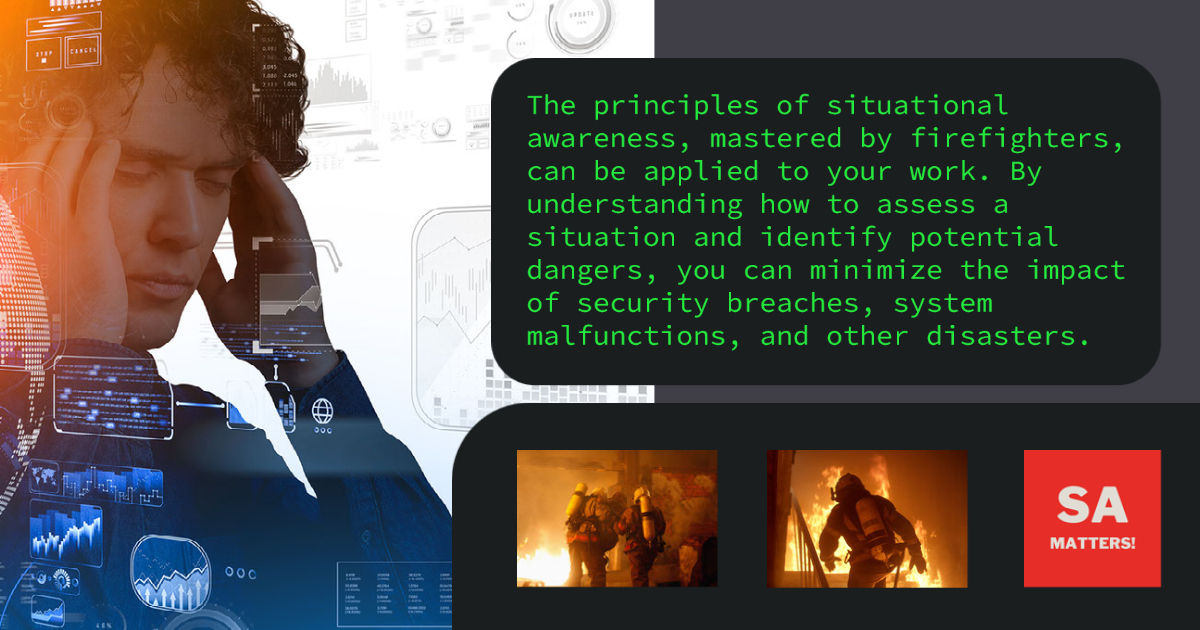
“You are dispatched to a complex incident”
What was the last time you were the first unit to respond to a ‘complex incident’ report? Probably never, and yet incidents are labeled as complex in evaluations. What exactly makes an incident complex, and why are we bothered by it?
The complexity of an incident – which is determined by its physical size, location, different priorities, conflicting information or unexpected events – makes it difficult to obtain good situational awareness.
Below is the definition of situational awareness again:
The ability to perceive and understand what is happening around you, in the context of how time is passing, and then being able to make accurate predictions about future events… hopefully in time to prevent bad outcomes.
You use your observations as the basis to form a picture, but both unclear information and the scale of an incident can make this difficult. Although you consciously look around you, you are simply unable to see the complete picture. The amount of information coming in can be so large that you miss things, you sometimes literally cannot see what is happening in front of you.
Conflicting observations
If the observations are successful, you still need to form an image. If the observations are conflicting – for example, what you see does not match what you hear – it can be difficult to understand what exactly is going on.
Our brains do not like this confusion and start to fill in parts themselves. You think you understand it, but the reality is different. Correct action is then actually not possible without luck.
Once you finally understand what is going on, it is not always immediately clear what exactly needs to be done to tackle the incident. This includes procedures that have not been practiced often or priorities that are not clear.
The image you have formed and what is actually going on are often initially far apart in complex incidents. It may therefore take time before you realize that you are actually dealing with a complex incident. If you do not immediately recognize the complexity, it contributes to creating your own obstacles of situational awareness:
- Multitasking: trying to perform multiple tasks at the same time
- Incomplete image: sharing your situational awareness is difficult if the image is incorrect
- Stress: subconsciously pressure is created due to the complexity of the incident
- Task fixation: “It’s too much, but if I concentrate on one thing now, at least it will get done.”
Recognize a complex incident through ‘Stop and think’
By regularly creating a ‘Stop and think’ moment during the 360, you are more likely to quickly recognize the complexity. You physically and mentally distance yourself from the incident for a moment. You can then mirror what you see and think you understand to reality. Ask yourself, “Do I have enough people, knowledge and equipment on site to handle this incident?” Or “How much I don’t know yet?”
You then decide which safety net you will use. This does not mean that you cannot start acting, but keep in mind that the overall picture is complex, and you must be prepared to make adjustments. Therefore, be clear with the commands you give:
“With what I know now, this is the best solution, but that can still change.”
Complexity and situational awareness are therefore related in two ways. An incident can become complex if your situational awareness is incorrect. You don’t allow yourself the time to make the right choices. In addition, the situation can actually be complex, making obtaining situational awareness very difficult.
In both cases, ‘Stop and think’ works: what do you not know yet, and who, or what, can help you with that?
Being the first to respond to an incident that is immediately labeled as complex will not happen so quickly. But shouldn’t we use situational awareness to quickly conclude that an incident is complex? I’m happy to help you with this!
Want to read more?
MY LATEST BLOGS

Your gut feeling rarely lies: leadership starts with sensing what is really going on

Leadership; it starts with a question
